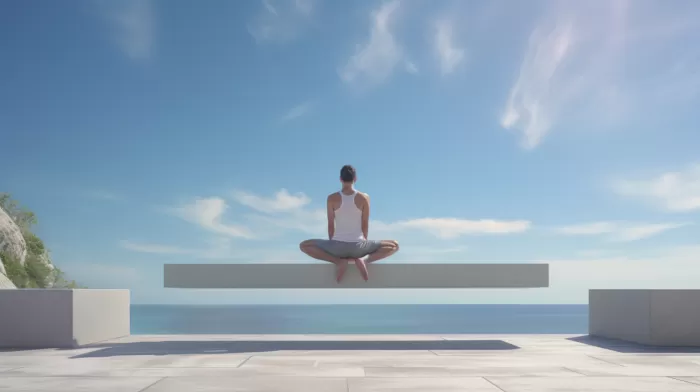Experiencing tightness across your lower and mid back or chest? You’re not alone, as back pain is a common issue for many people. The culprit? Muscles that become too tight, restricting range of motion and compressing or irritating your nerves. The good news is, you can alleviate this pain through some simple stretching exercises which focus on creating space between your spinal vertebrae. In this article, we present a step-by-step guide to performing the Bridge Pose, a yoga posture that can help you feel better and avoid back pain.
Beginning Posture
To start, sit down on the floor with your knees bent. Hold onto your knees for balance and engage your core muscles while gently allowing yourself to lie down. Once you’re on your back, pull your heels in closer to your buttocks. Let your arms relax down by your sides, your palms facing down and your fingers as close to your heels as possible.
Pelvic Tilt and Rock
Rock your pelvis gently by slowly tilting it upward and then rocking it back. This movement will create space in your vertebrae, loosening the tight muscles around your spine. Repeat this step as many times as you’d like to warm up the area before moving onto Bridge Pose.
Bridge Pose – Unassisted
Once you’re warmed up, it’s time to move into the Bridge Pose. Tilt your pelvis up and continue the motion to raise your low back up off the floor. Shift your weight onto your shoulders and bring your heels a bit closer to your body. You can hold this pose for a few breaths. When you’re ready to return to the starting position, lower your body down from your shoulders to your hips.
Bridge Pose – With Block Assistance
In this variation of the Bridge Pose, you can use a yoga block or a support item like a thick book or dense pillow for additional support. Note that with the block, there are three different vertical sizes to choose from, depending on which side you place on the floor.
Begin the Bridge Pose by tilting your pelvis and arching your spine. Insert the block beneath your tailbone for added support. This block will hold up your low back and help you sustain the posture if you don’t have the strength or stamina to hold it by yourself.
Using a support block transforms the Bridge Pose from a strengthening exercise to one which opens up tight areas of your body. You can hold this supported Bridge Pose for up to five minutes before slowly returning to the starting position.
Supported Bridge Pose Benefits Over Time
Closing Posture
After completing the Bridge Pose, remain on your back and draw both knees in toward your chest. Give your knees a gentle hug, making sure to keep your shoulders down and relaxed. You can also rock your knees from side to side or come into a double knee twist to further loosen and relax your lower back.
By regularly practicing the Bridge Pose, you may experience a significant reduction in back pain and tightness. Not only will this pose help to open up spaces between your spinal vertebrae, but it will also improve your posture and overall flexibility, contributing to a healthier back and a happier you!



